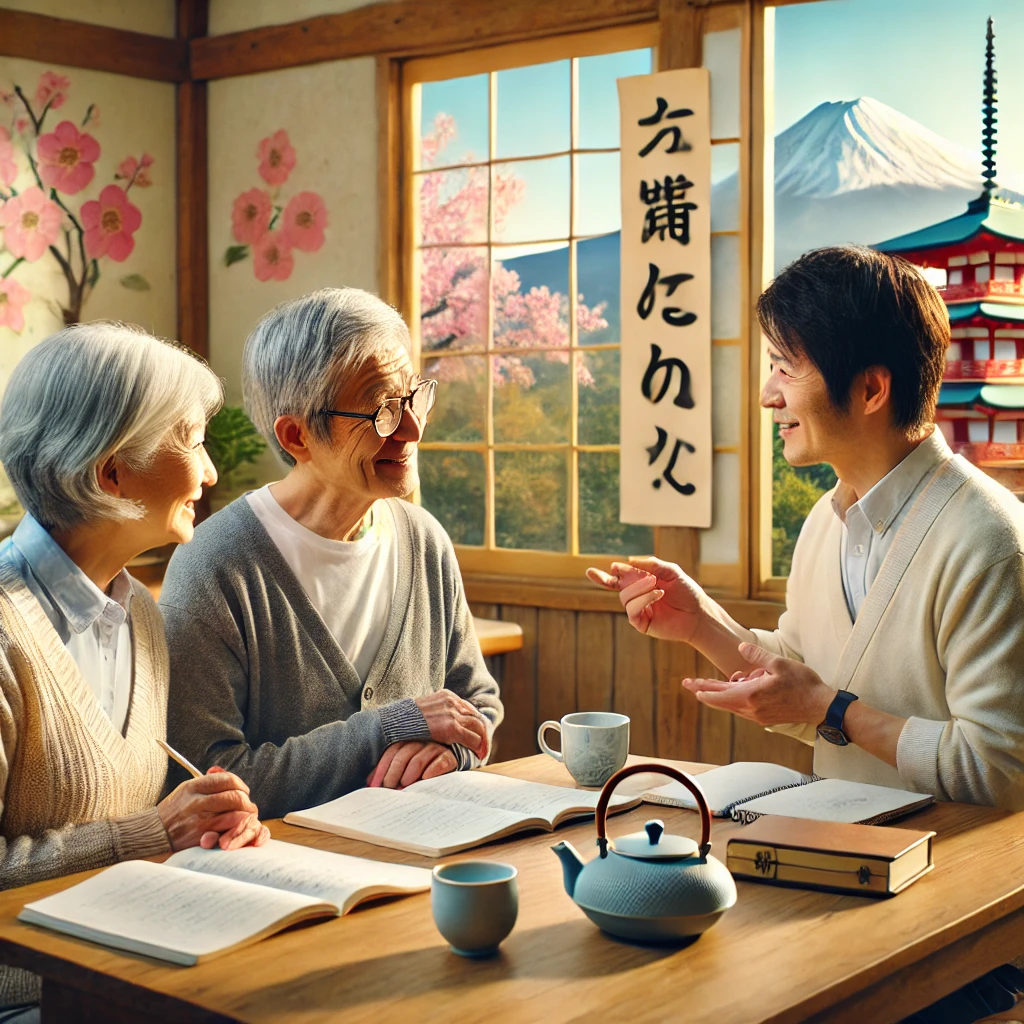The Importance of Cultural Context in Language Learning
Celebrating Language and Culture Beyond French
February is a month when we celebrate French language and culture, but at Polyglottist Language Academy, we proudly offer 14 other languages as well. Language learning is about more than just grammar and vocabulary—it’s about understanding the culture, history, and way of life that shape the language itself.
This year, we are excited to offer in-person Japanese classes for the first time! Our new, highly experienced Japanese teacher, Mari, brings a wealth of knowledge and passion for teaching. Mari was born in Gunma Prefecture, north of Tokyo. She studied French literature at Meiji Gakuin University in Tokyo before moving to Toronto to further her studies in International Economics. Throughout her career, she has lived and worked in Tokyo, Toronto, Singapore, and Boston, before settling in the Bay Area in 2005.
With over six years of experience teaching both children and adults at a local language school, Mari has a student-focused approach that tailors lessons to individual needs. She recently earned her Japanese language teacher certification from Seisa University in Yokohama and continues to refine her teaching methods to ensure a dynamic and effective learning experience.
Mari’s energetic and humorous teaching style makes her classes engaging and memorable. Whether in-person in Berkeley or online, she provides a supportive environment that helps students progress confidently. We are thrilled to have Mari as part of our team, along with four other wonderful Japanese instructors who bring diverse perspectives and expertise.
Why Cultural Context Matters in Language Learning
Learning a language isn’t just about memorizing words and grammar rules. To truly master a language, you must understand the culture that shapes it. Cultural context influences expressions, politeness levels, idioms, and even how people structure their thoughts. Without cultural understanding, a learner may struggle to fully grasp the meaning behind words and phrases.
Example: Cultural Nuances in Japanese Language
Japanese is a perfect example of how language and culture are deeply intertwined. Unlike English, Japanese has a complex system of politeness levels, which affect how people speak based on their relationship with others.
Keigo (敬語): The Japanese honorific speech system has three levels: sonkeigo (respectful language), kenjougo (humble language), and teineigo (polite language). The use of keigo is essential in professional and formal settings, and without cultural knowledge, learners may struggle to use it appropriately.
Indirectness in Speech: In Japanese culture, direct refusals or strong opinions are often softened with polite expressions or indirect phrasing. For example, instead of saying "No, I can’t do that," a Japanese speaker might say "It would be a little difficult" (ちょっと難しいですね - chotto muzukashii desu ne).
Nonverbal Communication: Japanese culture places great importance on body language, silence, and tone of voice. In conversation, a simple nod (aizuchi) or pause can convey agreement, hesitation, or understanding. Learners who are unaware of these subtleties may misinterpret the speaker's intent.
Understanding Japanese Culture Through Language
Expressions That Reflect Culture
Many Japanese expressions carry cultural significance and have no direct English equivalent:
Itadakimasu (いただきます) – Said before meals, expressing gratitude for the food, the cook, and the ingredients.
Otsukaresama desu (お疲れ様です) – A phrase used in workplaces to acknowledge someone’s hard work, reinforcing Japan’s collective work culture.
Yoroshiku onegaishimasu (よろしくお願いします) – A multi-purpose phrase expressing goodwill and cooperation, often difficult for beginners to translate literally.
Seasonal and Cultural References in the Language
Japanese language is rich with seasonal and cultural references. Understanding these concepts helps learners appreciate the depth of communication in Japanese.
Hanami (花見): The tradition of cherry blossom viewing, often referenced in conversations, poetry, and literature.
Osechi Ryouri (おせち料理): Traditional New Year’s food, where each dish carries a symbolic meaning.
Setsubun (節分): A seasonal festival marking the beginning of spring, often mentioned in daily conversations and media.
How Our Japanese Classes Incorporate Cultural Learning
At Polyglottist Language Academy, we believe that language and culture should be learned together. Our Japanese classes integrate cultural insights into the curriculum to provide a deeper, more meaningful learning experience.
What You Can Expect in Our Japanese Classes:
Real-Life Scenarios – Learn how to navigate situations like ordering food, asking for directions, and making polite requests in Japan.
Cultural Immersion Activities – Explore topics such as Japanese holidays, customs, and etiquette through interactive discussions and exercises.
Media & Pop Culture Integration – Study language as it appears in anime, J-dramas, and music, understanding how conversational Japanese differs from textbook language.
Traditional and Modern Perspectives – Compare formal and casual speech, traditional versus contemporary expressions, and how Japanese language is evolving.
Meet Our Expert Japanese Instructors
Mari is just one of our highly qualified instructors! In addition to her, we have four other experienced Japanese teachers who bring their own unique backgrounds and teaching styles. Whether you prefer in-person lessons in Berkeley or online classes, our instructors are committed to helping you achieve fluency while understanding the cultural nuances of Japanese.
Join Our Japanese Classes Today!
Language learning is more than just memorization—it’s about embracing a new way of thinking and communicating. By learning Japanese with us, you’ll gain both linguistic skills and cultural insights that will enrich your experience.
To read more about Japanese language and culture, read our earlier article below:
Why Study Japanese
Ready to start learning Japanese? Click on the link below to explore our Japanese classes and sign up today
https://www.polyglottistlanguageacademy.com/japanese-classes/japanese-beginner-classes!

